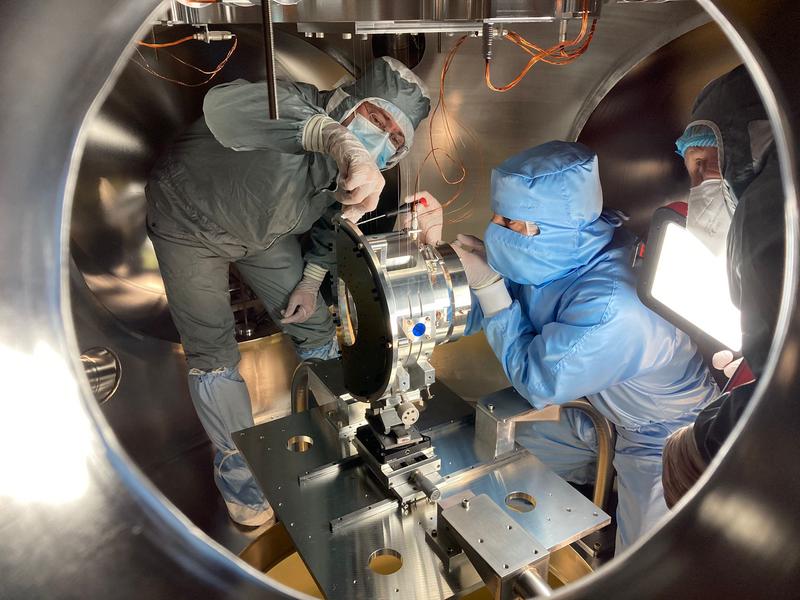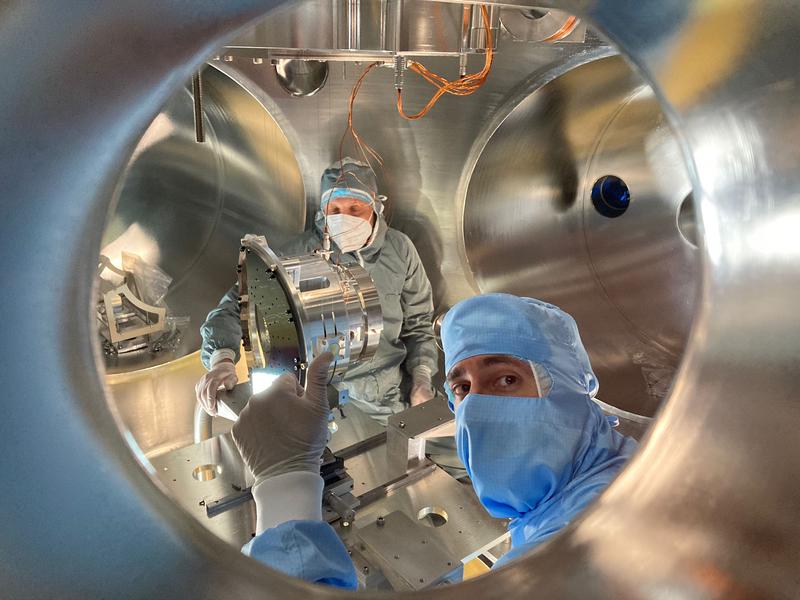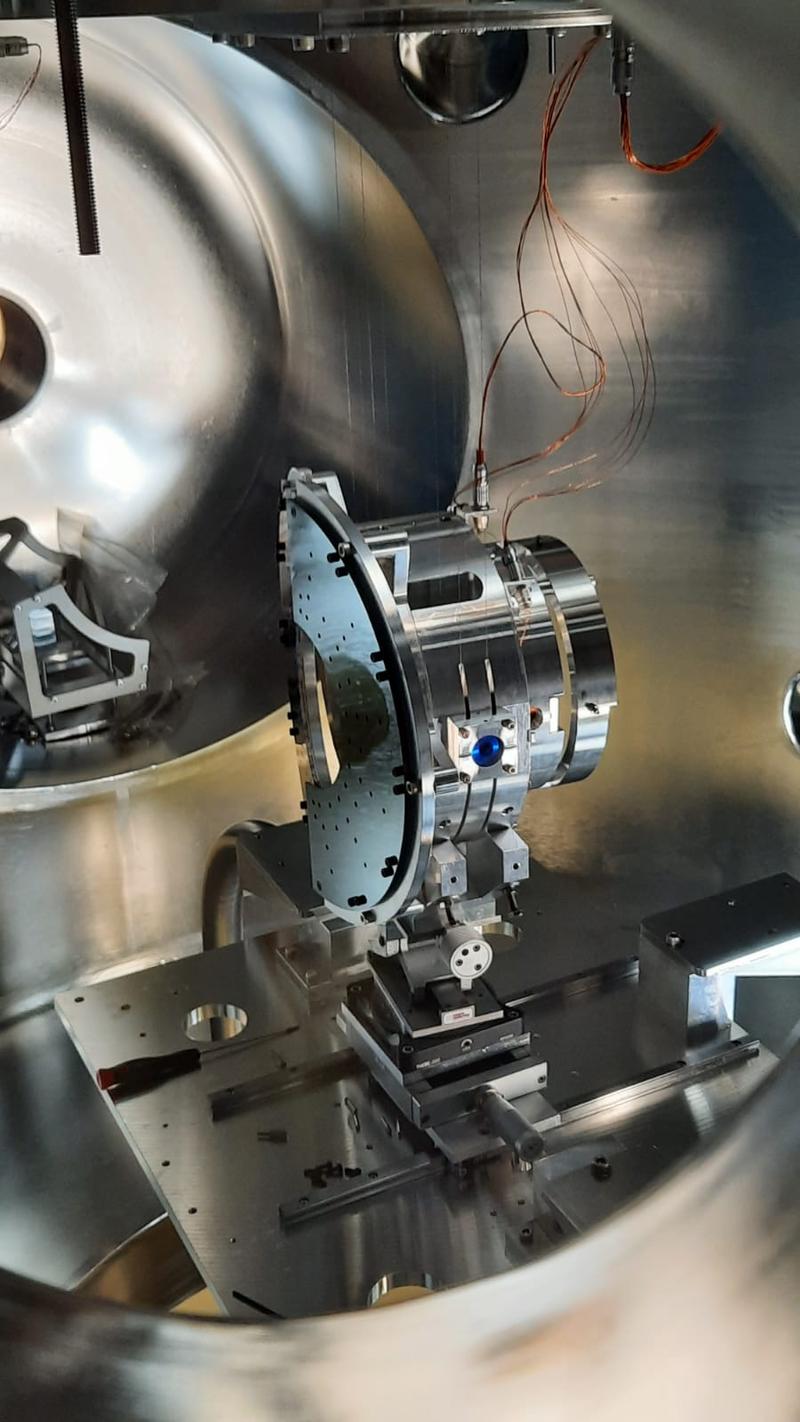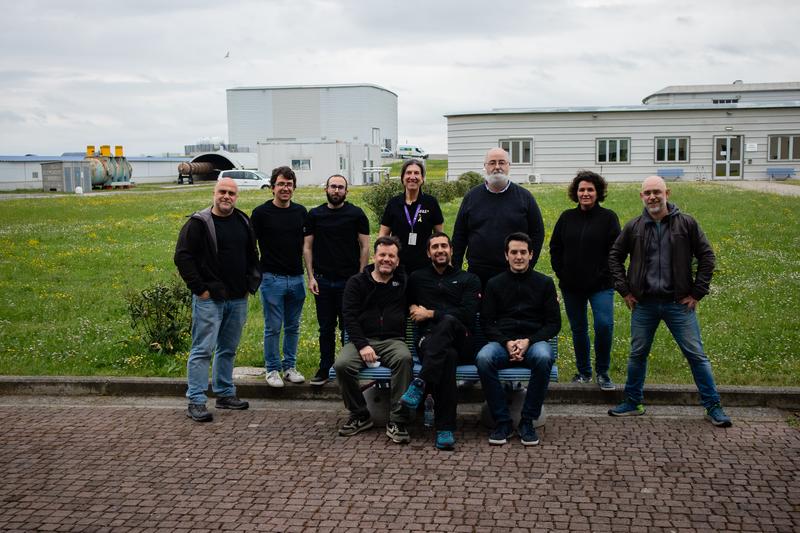Highlight
New Instrumented baffle installed at Virgo
April 28, 2021

The new instrumented baffle will serve as a demonstrator of the technology for its future implementation in the main arms of the interferometer, surrounding the main mirrors. The new baffle will provide precious data also to calibrate the simulations describing the light propagation inside the experiment. The instrumented baffle now enters a long period of commissioning and integration into the regular Virgo operations, well in time for being an integral part of the new Observation Run O4, currently scheduled for summer 2022.


It has been a great effort completely driven by IFAE scientists and the whole IFAE technical department including precise mechanics, electronics, DAQ and the need for intense optical tests and detailed simulations.
The basic requirements of the instrumented baffles are rather challenging. The total reflectivity of the surface at 1064 nm has been maintained at the level of 0.5% and the total scattering within about 500 ppm. This required precise material polishing and the application of anti-reflective coating layers. As suspended by a couple of wires, no active cooling is possible and the readout cables have been minimised to avoid affecting the performance of the payload and seismic attenuation systems. Therefore, both wired and wireless DAQ solutions have been implemented. Most importantly, the ultra-high vacuum conditions in the towers (with a vacuum level of 1E-9 mbars) imposed stringent constraints to all the materials to avoid contaminants affecting the mirrors, and forced a rather novel PCB design with low power consumption and efficient heat dissipation.
In addition, the baffle DAQ system should not interfere with the rest of the electronics in the tower, governing the feedback loop systems that control the position of the mirror. Finally, the total weight of the new device met within 100 g the weight of the non-instrumented version to facilitate the integration in the suspension system. The baffle is equipped with 76 Si-based photosensors suitable for ultra-high vacuum conditions and complemented with anti-reflective coating, as the result of a two-years long R&D process triggered by IFAE and carried out together with Hamamatsu in Japan.

The IFAE team counted with the invaluable help from Pisa and EGO staff, and profited from a close collaboration with CERN’s and ALBA’s vacuum departments, and the metrology department from the Optics Institute in Madrid.
For the first time a Spanish Institution is making a significant hardware contribution to a worldwide leading gravitational waves experiment using ground-based interferometry.

- IFAE Research group
- Gravitational Waves Group
- Contact
